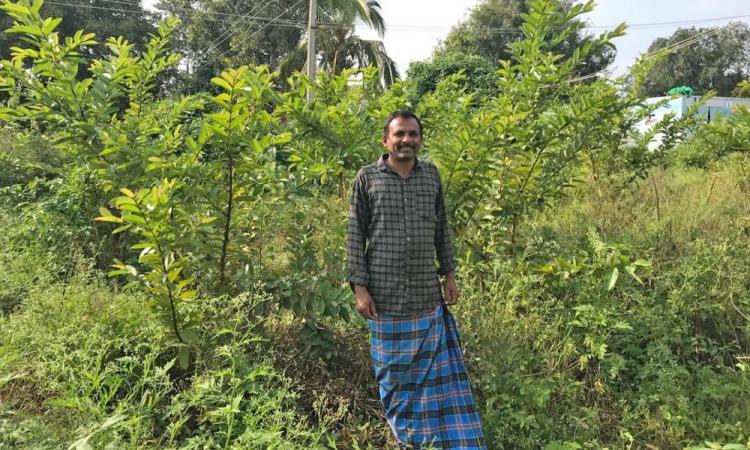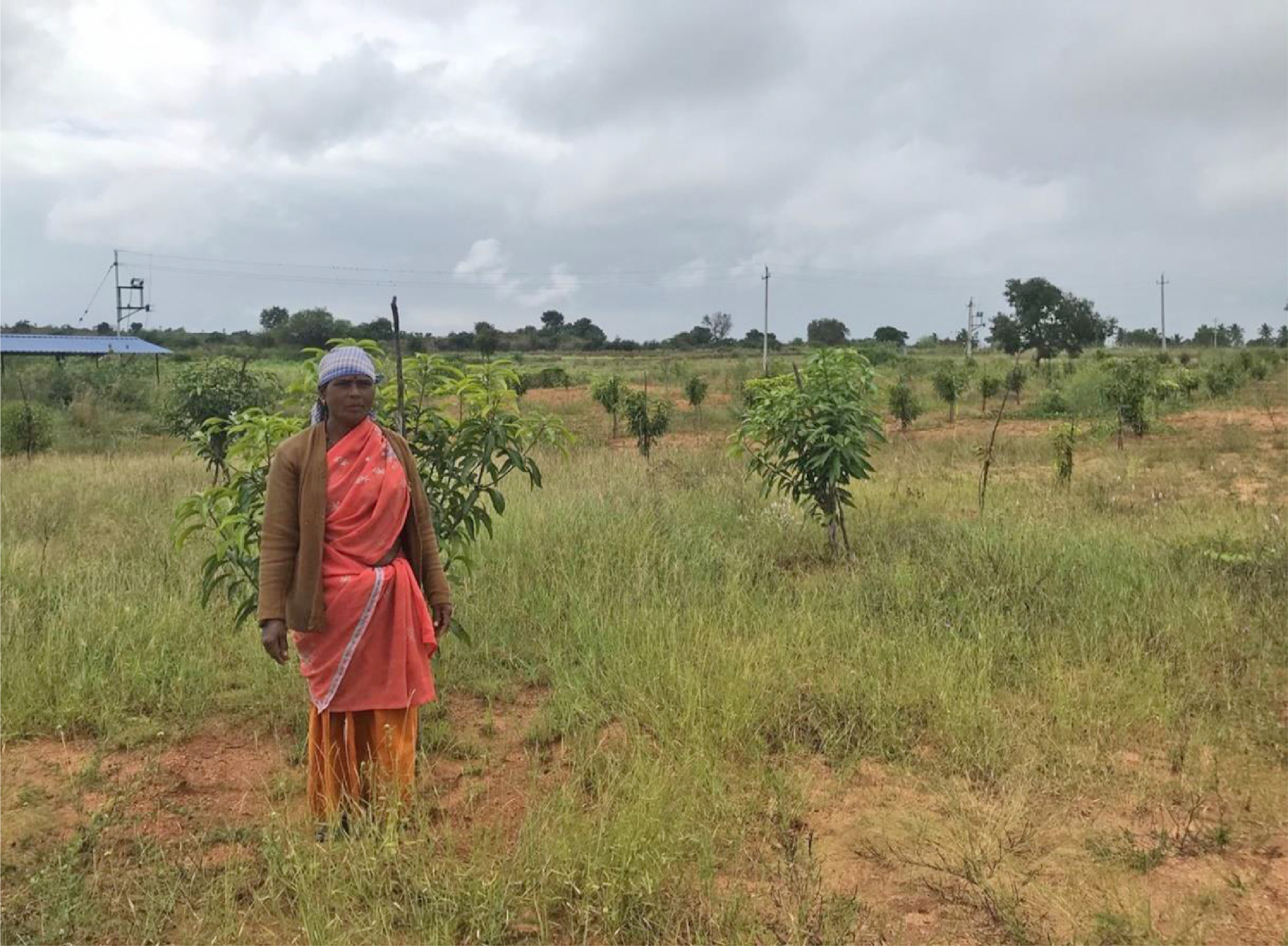
Agroforestry enhances farmers’ ability to adapt to climate change and delivers multiple ecological, social, and economic benefits. However, scientific evidence linking agroforestry as a Nature-based Solution (NbS) to the achievement of the Sustainable Development Goals (SDGs), and in particular the localization of these goals, is limited.
A recent case study ‘Unlocking the potential of agroforestry as a nature-based solution for localizing sustainable development goals: A case study from a drought-prone region in rural India’ by Yasmeen Telwala attempts to support the adoption of agroforestry as a nature-based solution to address climate change adaptation and socioeconomic resilience. It discusses the potential of agroforestry in localizing SDGs, inclusive development and throws light on the “real world, which is particularly relevant for developing countries.
It is an attempt to fill the knowledge gap by presenting a micro-level case study from a drought-prone region in India where smallholding farmers are driving landscape change that offers lessons for developing similar strategies at the grassroots level. This paper uses a qualitative research methodology to demonstrate how agroforestry offers NbS that localize 10 of the 17 SDG targets. The approach is more process-oriented and grounded in a dynamic reality. In doing so, it identifies farmers' intrinsic motivations, barriers to the adoption of agroforestry practices as a means to adapt to climate hardships and the role of the carbon market in rewarding environmental stewardship.
The twenty villages of Bagepalli and Chintamani taluks in the southern Indian state of Karnataka, where farmers were interviewed for this study, are in a semi-arid, drought-prone dryland with an average annual rainfall of 598 mm. Most families in the villages work as agricultural labourers, while a few own small agricultural plots ranging in size from one to ten hectares. Farmers largely practice rainfed agriculture and generally grow drought-resistant crops such as finger millet, groundnut, pigeon pea, and cowpea. Drip or sprinkler irrigation methods are usually only affordable for relatively wealthy farmers.
Farmers are exposed to current climate variability and risk, which is likely to increase due to climate change, as there has been unusually heavy rainfall in 2020–21. The migration of young people to nearby cities is increasing, in part due to the decline of agriculture due to erratic climate patterns.
The village-based self-organization of small farmers is called "Coolie Sangha" with about 30,000 participating families in over 1000 villages. The innovative idea of guaranteed minimum field labour to prevent seasonal migration of farm workers first emerged in these Coolie Sanghas and was later adopted at the national level in the Mahatma Gandhi National Rural Employment Guarantee Act (MG-NREGA). The locally based NGO called Agricultural Development And Training Society (ADATS) has been working with the Coolie Sangha for 44 years and has developed an award-winning biogas project, a pro-poor Clean Development Mechanism (CDM) project, and low-carbon emission farming to mitigate climate change.
In the 1990s, the region generally lacked awareness, knowledge, and tools for agroforestry adaptation, as farmers largely focused on growing millet and dryland crops to survive. In 1997, farmers were mobilized by ADATS to convert to agroforestry. The efforts of farmers, which had begun in 1997, led to the registration of one of the first afforestation/reforestation CDM projects in 2011 with UNFCCC.
In 2015, the project was awarded, the Gold Standard. The Gold Standard sets the standard for climate and development interventions to quantify, certify and maximize their impact. All impacts are tracked according to robust monitoring plans, verified by an approved independent third party, and certified by the Gold Standard, which forms the basis of the generation of Verified Emission Reductions (VERs).
More recently, ADATS negotiated with private sector organizations for the sale of VERs that wanted to offset their emissions such as FairClimateFund (the Netherlands), PrimaKlima (Germany), NUMERCO (London), Climate Partner. (Germany) and EcoAct (France). A total of 96% of the INR 61.8 million (approx. USD 800,000) received as carbon revenue for the 72,868 gold standards VERs were distributed to the participating farmer families, based on the survival rate of trees on their fields (carbon stock they had sequestrated), as a reward for the environmental service.
The estimates are that 22,800 tCO2 were sequestered at the end of the 5th year and 5700 tCO2 were sequestered per annum. The total number of participating farmers in the program at the beginning of the period of 1997–2000 was 78, and as of December 2021, a total of over 1352 farmers (33% of which are women) have planted 334,166 trees with around 61% survival rate, in the area spreading across 3968 acres.

This case study provided a typical success story of how farmers continue agroforestry under dynamic conditions, which would address the research question of how agroforestry supports the localizing of SDGs and the intrinsic motivation for communities to continue. It focuses on the farmers’ narratives, and puts their perspectives at the forefront, emphasizing on basic needs of the poorest of the rural poor. The information presented in this paper will be of interest to practitioners, researchers, and policymakers working on community-based NbS in developing countries, as well as those interested in agroforestry as a strategy for advancing the SDGs and its scope under global initiatives as UN Decade for Ecosystem Restoration.
As NbS aim to address societal challenges with an integrated and sustainable approach, the effective implementation of such an intervention undoubtedly requires dealing with complex human-nature systems. One of the main reasons why agroforestry should be promoted as the NbS approach is that it has immense potential to integrate socio-ecological systems that deal with coupled systems of a human adaptation strategy and nature.
Conclusion
The case study provides lessons for other similar community-based NbS as it highlights the underlying factors that led to farmers' transformative adaptation triggered by a crisis (drought) and facilitated by exposure to an alternative pathway (agroforestry). It shows how even in a complex system that requires constant adjustments with limited policy support, smallholder farmers can achieve positive results.
The pioneers, as agents of change, set the course, followed by scaling up through the involvement of other community members, which later includes innovation and its diffusion, with adaptations being iterative. Farmers' adaptive management strategies, based on their wisdom and traditional knowledge, led to systemic change. It is important to empower marginalized and vulnerable communities, especially the youth, to reconnect with traditional knowledge rather than moving away from what they are good at and disconnecting from nature.
Greater collective and coordinated action by smallholder groups through a self-governing institution helped to achieve a spatial dimension required for landscape-scale approaches to integrated natural resource management. The path to conversion was facilitated by the dedicated local NGO that connected farmers to the carbon market and took care of the technical complexities. Economic instruments to reward ecosystem services such as carbon sequestration help sustain enthusiasm and build long-term data capacity. Farmers’ intrinsic motivation to pursue more climate-resilient land management had a direct and large impact on their attitude or behaviour to shift to agroforestry.
This further elucidates links between perceptions of climate change and effective mitigation and adaptation strategies. Local strategies like agroforestry that can lead to long-term sustainable change without depending on the traditional donor development model should be prioritized for true self-sufficiency with a balance between short-term economic benefits and long-term sustainability goals.
Agroforestry should be given higher priority as NbS in policies and programs aimed at ecosystem restoration, land degradation neutrality, and climate change mitigation goals, particularly for developing countries.
The full article can be accessed here
/articles/utilising-agroforestry-nature-based-solution-achieve-sustainable-development-goals